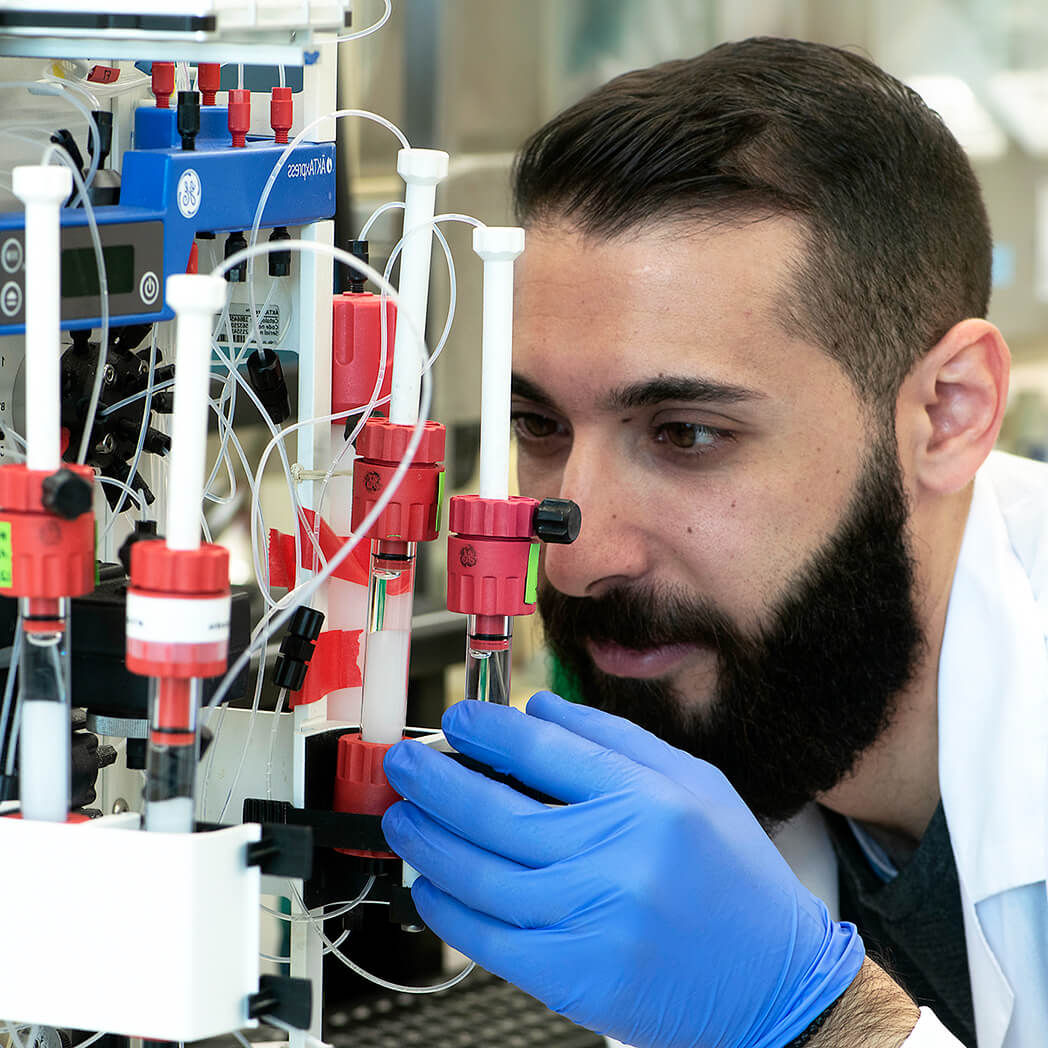Overview
|
Cat #:
STN-340
Purity: >98% (HPLC)
CAS No.: 85205-49-8
MW: 4194 Da
Form: Lyophilized
Noxiustoxin (#STN-340) is a highly pure, synthetic, and biologically active peptide toxin.
Alternative Name K+ channel toxin α-KTx 2.1, NTx, Toxin II.11
MW: 4194 Da
For research purposes only, not for human use
Applications
Our Bioassay
Our bioassay
 Alomone Labs Noxiustoxin inhibits KV1.3 channels heterologously expressed in Xenopus oocytes.Left: Time course of KV1.3 current amplitude in response to test pulses of 100 ms to 0 mV from a holding potential of -100 mV. 200 nM Noxiustoxin (#STN-340) was perfused at the period marked by the horizontal bar. Right: Traces of KV1.3 currents before (red) and during (black) application of Noxiustoxin.
Alomone Labs Noxiustoxin inhibits KV1.3 channels heterologously expressed in Xenopus oocytes.Left: Time course of KV1.3 current amplitude in response to test pulses of 100 ms to 0 mV from a holding potential of -100 mV. 200 nM Noxiustoxin (#STN-340) was perfused at the period marked by the horizontal bar. Right: Traces of KV1.3 currents before (red) and during (black) application of Noxiustoxin.
Specifications
Properties
Technical Specifications
Origin Synthetic peptide
MW 4194 Da
Sequence TIINVKCTSPKQCSKPCKELYGSSAGAKCMNGKCKCYNN.
Modifications Disulfide bonds between Cys7-Cys29, Cys13-Cys34, and Cys17-Cys36. Asn39 - C-terminal amidation.
Peptide Content 100%
Purity >98% (HPLC)
Molecular formula C174H291N51O55S7.
CAS No. 85205-49-8
Accession number P08815
Biological Activity
Target KV1.2, KV1.3 K+ channels
Effective concentration 10-200 nM.
Activity Noxiustoxin inhibits KV1.2 and KV1.3 K+ channels1.
References
- Grissmer, S. et. al. (1994) Mol. Pharmacol. 45, 1227.
Solubility and Storage
Shipping and storage Shipped at room temperature. Product as supplied can be stored intact at room temperature for several weeks. For longer periods, it should be stored at -20°C.
Solubility Any aqueous buffer. Centrifuge all product preparations before use (10000 x g 5 min).
Storage of solutions Up to two weeks at 4°C or three months at -20°C.
Scientific Background
References
Scientific background Noxiustoxin was originally isolated from the venom of the scorpion Centruroides noxius Hoffmann1 and was shown to interact and inhibit KV1.2 and KV1.3 K+ channels.2 The toxin blocks KV1.3 (recorded using patch clamp in Jurkat cells) with Kd of 6 nM.3 It was shown to bind synaptosomal membranes4 and to increase transmitter release.5 In addition, it was shown to block K+ channels in lymphocytes.6
References
- Possani, L.D. et. al. (1982) Carlsberg Res. Commun. 47, 285.
- Grissmer, S. et. al. (1994) Mol. Pharmacol. 45, 1227.
- Mullmann, T.J. et. al. (2001) Biochemistry 40, 10987.
- Martinez, F. et. al. (1996) Toxicon 34, 1413.
- Stiges, M. et. al. (1986) J. Neurosci. 6, 1570.
- Drakopoulou, E. et. al. (1995) Biochem. Biophys. Res. Commun. 213, 901.
Last Update: 08/01/2025

